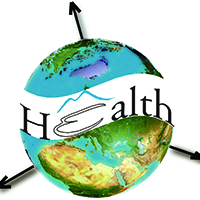Interregional differences of life expectancy in rural Russia - Assessment of socio-economic, demographic, behavioural and ecological factors

Accepted: 21 October 2020
HTML: 120
All claims expressed in this article are solely those of the authors and do not necessarily represent those of their affiliated organizations, or those of the publisher, the editors and the reviewers. Any product that may be evaluated in this article or claim that may be made by its manufacturer is not guaranteed or endorsed by the publisher.
Authors
The article is aimed at studying the effects of social, economic, demographic, behavioural and environmental factors on the life expectancy of rural people in different types of regions. Using cluster analysis, we identified four relatively homogeneous groups of Russian regions in terms of life expectancy. The impact of socio-economic, demographic and environmental indicators on life expectancy of the rural population was assessed using regression models. We identified regions with low life expectancy for the rural population, and factors that have negative effect on life expectancy at birth. The main ones were alcohol abuse, high unemployment and emissions of pollutants into the air. The regression analysis showed that investments aimed at the development of health care, provision of social services and improvement of residential premises contributed to an increase in life expectancy. Significant factors in regions with high life expectancy were a lower number of recorded crimes per 100,000 of the population and a decrease in high unemployment, as well as an increase in educational expenses. In the group of regions where life expectancy of the rural population was approaching the average level in Russia, an important factor was also an increase in the level of education. We conclude that a regionally differentiated approach is necessary when introducing social policy changes, and measures aimed at increasing the life expectancy of the rural population should take into account the distinctive differences in socioeconomic development of the various regions of Russia.
How to Cite
PAGEPress has chosen to apply the Creative Commons Attribution NonCommercial 4.0 International License (CC BY-NC 4.0) to all manuscripts to be published.

 https://doi.org/10.4081/gh.2021.876
https://doi.org/10.4081/gh.2021.876




